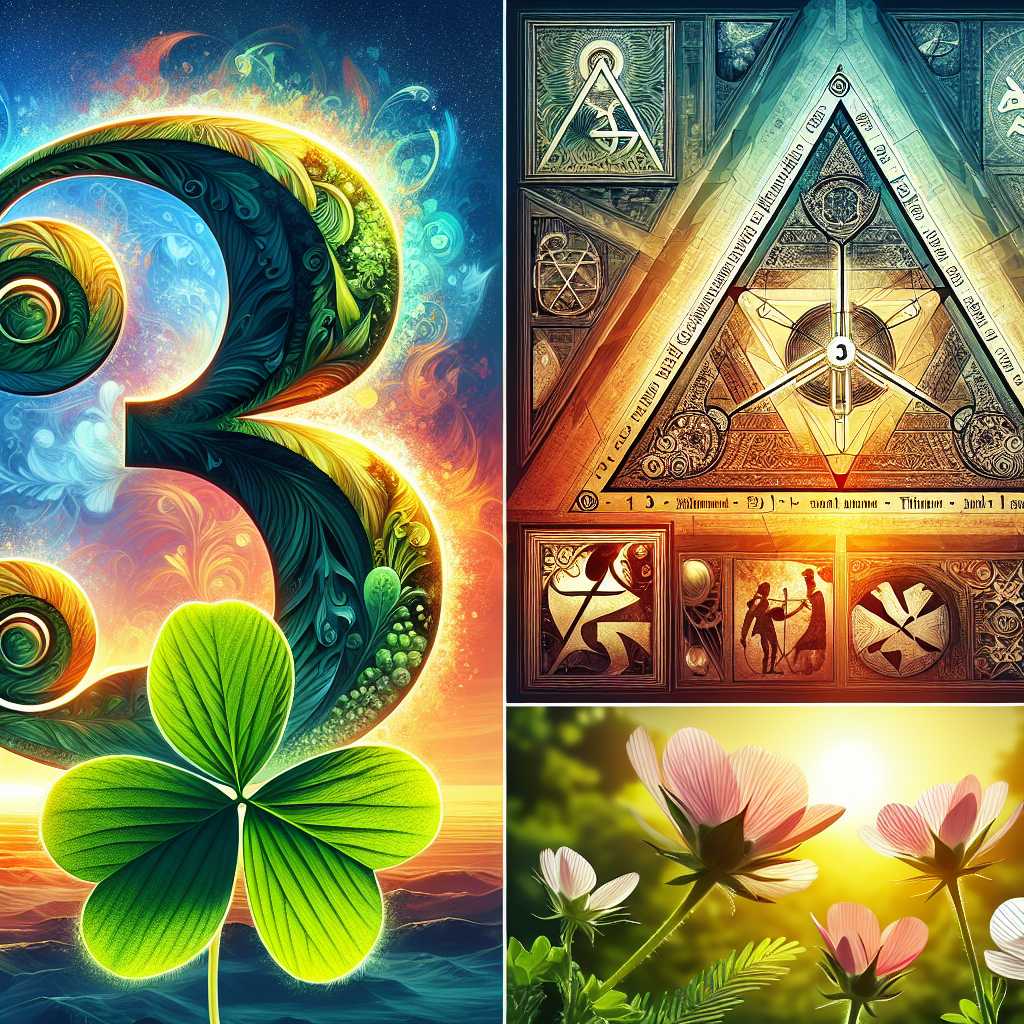Understanding the Significance of the Number Three in Various Contexts
The number three holds a unique place in the world of numerology, culture, religion, and even in practical terms. As one of the earliest numbers to signify more than a pair, yet still small enough to be immediately quantifiable by humans without counting, ‘three’ bears inherent significance. This article explores the diverse implications and uses of the number three, reflecting its perennial presence in human life.
Numerological and Symbolic Interpretations of Three
The number three is often considered lucky and symbolically rich in many cultures. In numerology, it is associated with communication, interaction, and neutrality. The trifecta often signifies a kind of completeness: beginning, middle, end; birth, life, death; or past, present, future. Many world religions find sacred significance in three: Christianity with the Holy Trinity; Hinduism with the trimurti (Brahma, Vishnu, Shiva); and Buddhism’s Triple Gem (Buddha, Dharma, Sangha).
In more secular spaces, three’s ubiquity persists. Literature famously leverages the rule of three—a writing principle suggesting that a trio of events or characters is more satisfying and effective. Triangles are a basic building block in art and architecture because of their inherent strength – think of the pyramids or support trusses.
Three in Science and Nature
In science, the number three presents itself in various ways from atomic particles—protons, neutrons, electrons—to dimensions (height, width, depth). Genetic code is read in triplets of nucleotide bases (codons). Three states of matter—at least observable at everyday temperatures—are solid, liquid, and gas.
In nature, patterns of three can be aesthetic or indicative of genetic fitness. For instance, many plants have trimerous flower patterns—three petals or multiples thereof—linked to evolutionary advantages. Moreover, numerous ecosystems are structured around tripartite food chains: producer, consumer, and decomposer.
Social and Cultural Implications
The influence of three extends into social and cultural constructs. Triple-entendre phrases (like “hear no evil, see no evil, speak no evil”) underscore lessons throughout cultures. Governmental divisions into executive, legislative, and judicial branches reflect a triadic stability. Even our daily structure falls neatly into parts: morning, afternoon, evening.
Fables and folktales from across the globe illustrate lessons through triads—as found in the “Three Little Pigs” or “The Three Musketeers”. Cinema often uses trilogies to explore narratives thoroughly yet succinctly. Our cultural fascination with threes emanates from this core comprehension that there is something indelibly complete and inherently familiar about this numerical triplet.
Practical Uses
Beyond symbolism and abstract thought, three has practical applications. Triangulation methods are crucial in navigation and surveying—allowing explorers to pinpoint precise locations based on fixed reference points. Redundancy is engineering makes frequent use of triplicate systems for safety and reliability—airplanes’ triple redundant systems are one such example.
Choices are often presented in threes—for example small, medium, large—in consumer industries like food service or clothing because it satisfies our mental schemas without overwhelming us with complexity.
Notes
Image description: A set of visually striking images showing various representations of the number three – including the numeral itself; a three-leaf clover; a triad triangle diagram with cultural emblems representing government branches; and a nature shot depicting a plant with trimerous flowers.
